Unit 3 Human Resource Management
Introduction
The professional employment and use of people, on the basis of a contract, to achieve business goals and objectives in the market is Human Resources Management. The undertaking of such a management includes, but is not limited to, the processes of recruiting and selecting new employees and planning and organizing for these processes, making arrangements for the training of the chosen individuals, and staffing and supervisory responsibilities (Noe et al., 2017). This global trend of the HRM department managing employees, their periodic evaluation and provision of incentives, as well as ensuring that company policies are adhered and relevant tasks completed, is an observable function at most domestic and international business organizations.
This report analyses the HRM at Royal Bank of Scotland and puts forth the findings on its everyday function and relevance. It will also dissect the various practices and approaches adopted by the department with the intention of increasing employee productivity and generating market profits. Employee legislation as well its consequent impact on the process of decision-making shall be examined.
LO1:Basics of HRM: Scope, Purpose, and Functions
The Royal Bank of Scotland was founded in 1724 as a provider in the banking and financial service industry. It is a subsidiary of The Royal Bank of Scotland Group PLC. It has around 700 branches, most situated in Scotland with some established in Wales and England as well. It provides a diverse range of services and products such as banking and insurance, risk management, l lending, payments and deposits, to personal and commercial customers. They also service corporate and institutional customers.
The purpose of the HR department at Royal bank of Scotland is to lead the organizational effort in enduring that the company is a great work environment: supportive, rewarding, and easy to work at. Setting fair pay, identifying and moulding talent, developing comprehensive policies that are easy to follow as well, and guiding employees are some responsibilities that they take on.
Functions of the HRM department at Royal Bank of Scotland include:
Compensation and Benefits: Members of this team evaluate employee performance and ensure fair remuneration, which also designing reward and benefit packages to encourage development and quality of service. They also handle pensions and retirement savings, and interact with the regulators of RBS.
Employee Relations: Mediation between managers and employees as well as the provision of guidance and advice on complex situations. The aim is to protect the company’s reputation while maintaining employee interests as well. Customer service is a priority is a goal that will not be compromised.
Consulting and Partnering: Consultants work on a diverse range of projects and programmes at RBS from different areas of business to understand people and business strategies, and conceptualize ways to achieve both.
Organizational Capability: Sets up the business organizational framework of roles, portfolios, and accountability to as to enable the company to reach its goals. Also focuses on developing leadership within the organization as well as building a work culture that hold customer service and satisfaction as its utmost priority.
Recruitment: Recruiters embody the helpline for employees and provide support from the moment they apply to their changing careers within the organization. They work to engage and attract people with the right talent and skills who will add value to the company’s ever developing and evolving market strategies.
Training and Development: This team conceptualizes and designs various programmes and oversees their implementation with the goal of developing employee capabilities and skills and achieving company goals. Some of the programmes include leadership, policy training, business information, and on-demand learning. They have provisions for online and classroom learning as well.
The recruitment process at any organization is to attract potential employees who can meaningfully contribute to the business objectives of the company. The three types of recruitment processes and their analysis is as follows:
Internal Recruitment Process- Strengths and Weaknesses
Process of internal recruitment allows for referrals from within the organization. It uses the techniques of job posting where employees are made aware of an opening, and job bidding where employees who think they have the necessary skills can apply for the post. It is a cost-effective and time efficient process (Noe et al., 2017). Employee turnover rate is also minimized. This process however leads out a very big number of individuals from outside the organization who could potentially contribute to the organization from the pool of finite candidates that it offers.
External Recruitment Process- Strengths and Weaknesses
Recent graduates, employees at competitor firms, the self-employed or unemployed, ex-employees and those looking for a change are the applicant groups this process engages in. Information on the posting is spread through promotions and advertisement either online, TV, or newspapers etc. and those with qualifications apply for the opening in the company. Such a method engages a wide variety of skill and capability. Unfortunately, this is an expensive process as lots of planning and organizing goes into it, and it is time-consuming combing through the applicants and then conducting rigorous testing to ensure the right candidate is selected.
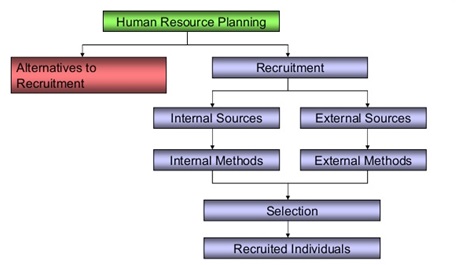
Figure 1 Recruitment Process Model (Source: http://slideshare.net)
Selection Process- Strengths and Weaknesses
The benefit in such a process lies in its ability to be framed or tailored to the exact requirements of the firm and creates such specificities. However, it could be that applicants are dishonest in their experiences or interviews or may not take the criteria seriously (Uzair et al., 2017). Thus the scope for trust begins only after employment, and this serves as a disadvantage the firm.
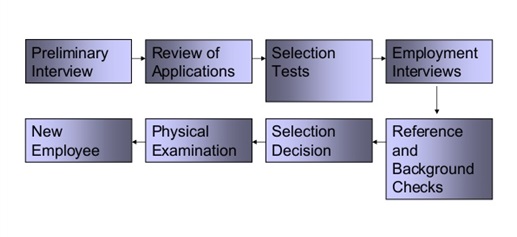
Figure 2. Selection Process Model (Source: http://slideshare.net)
‘Best-Fit V/S. Best Practice’ Approach Model
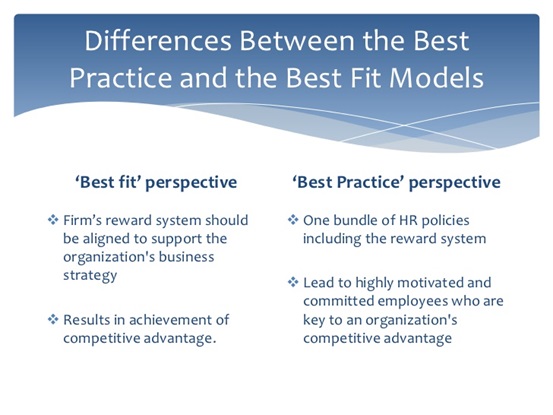
Figure 3. HRM Approaches (Source: http://slideshare.net)
The soft HRM approach model considers employees are the primary resource of the firm. In such a firm, the company is invested in the employees rise through the organization and has initiative in place to aid such an occurrence. In hard model of HRM, employees are seen as the primary source of trade and hence aligned with market plans and objectives.
LO2Key Elements of HRM: Best Practices and their Significance
The business objective of The Royal Bank of Scotland is to function as the preferred banking partner to internal corporations and financial institutions, and generate high profitability for its offered services. The HRM strategies the company utilizes must then benefit both the firm and its employees so that it enables to work together to achieve business objectives and enhance company productivity. Some key elements for this are:
Programmes for Training and Development
RBS aims to be a learning organization. Capability Checker is an internal tool used to help employees understand strengths and gaps in development. With the added objective of promoting organizational sustainability, this firm invests in resources in training its staff and expertise building (Kemal, 2011). The Festival of Learning campaign 2019 introduced employees to content such as AI, automation, etc. using new technologies and creative ways of instruction. Alternative learning tools/platforms such as webinars, e-learning, classrooms are developed at RBS to support personal initiatives and learning development. ‘Determined to Lead’ is a flagship leadership programme that develops individuals in key positions into facilitators that bring out the best in employees of the firm. They launched the Data Academy in 2019 with the intention of shedding light on data expertise and nurturing innovation and collaboration across the company and so some employees are pursuing degrees/ nano degrees in Data Science and Data Engineering.
Performance-based Reward and Recognition
The firm aims to strengthen employee relations by making sure the right reward is bestowed upon the right person. The aim of this strategy is not only to increase motivation not just in terms of quality of work, but also the simultaneous substantial body of quantity (Worthington & Welch, 2011). Research shows that employees who are financially remunerated are motivated, thus boosted company productivity (Iles et al., 2010); these take the form of bonuses, incentives, and rewards. RBS has been successful in raising the level of engagement of its employees and so has experienced an increase in productivity.
Inclusion and Diversity
The establishment of sustainable relationships with employees is a determinant of productive change (Beech & MacIntosh, 2012). “Working together” is currently one of the core values of the organization. Programmes such as celebrating diversity and open thought exchange have been adopted by the firm to facilitate inclusivity as part of the work culture. It also serves the purpose of team-building exercise. The company has conceptualized and implemented wellbeing programmes across social, financial, physical and mental health sectors to ensure that employees feel supported in their difficulties and are provided with the tools to address their challenges.
In the last decade, The Royal Bank of Scotland has faced many challenged that severely affected its functioning and commitment to provide quality service: Brexit, the Global Financial Crisis, retardation of permanent growth, government intervention, and change of CEOs. These challenges resulted in an organizational change and strategy overhaul that necessitated significant, appropriate, and impactful measures for staff management and sustenance.
Methods of HRM
Abraham Maslow’s Hierarchy of Needs
This model communicates the basic needs of employees so as to develop themselves and increase productivity, and add value to the company. The higher needs as established by this model is realized only when the lower needs are met. Self-actualization is encouraged with the provision of appropriate training and opportunities for development so that employees can reach their full potential and successfully achieve the goals they are set for their personal and professional development. The needs related to esteem are met by the recognition given through job titles, recognition and rewards, bonuses and benefits for services rendered, promotions and performance evaluations. The company instills a sense of belonging and community through the implementation of various programmed that appreciate diversity and encourage dialogue. In fact, RBS won Remploy’s ‘Outstanding work in Supporting, Developing, and Employing Disabled People’ award in 2006. Safety needs are addressed and provided for with the implementation of the Well-being programmes that covers social, financial, physical health, and mental health wellbeing. RBS pays its employees according to their seniority, skills, and positions and has initiatives to further increase their financial remuneration; thus it provides the means to take care of physiological needs.
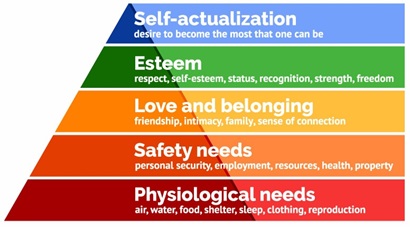
Figure 4. Maslow's Hierarchy of Needs (Source: http://simplypsychology.com)
McGregor’s Theory X and Theory Y
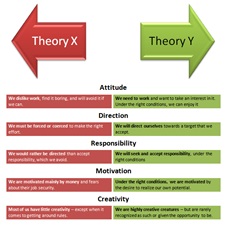
Figure 5. Mcgregor's Theory X and Theory Y (Source: http://nitieim19pomb126.blogspot.com/2012/08/theory-x-theory-y-and-theory-z.html)
The company to promote team spirit and effectiveness through the various challenges the company faced utilized principles of Theory Y. The Your Time initiative allows employees to work flexible timings that are set by their individual needs, with respect to the business requirements. RBS enjoys great relationships with representative organizations like trade unions and work councils thus showing their accountability. They provide employees with a supportive work environment that further rewards their dedicated service.
LO3Determinants of Human Resource Management
The Royal Bank of Scotland is one of the most eminent banking partners for Multi-National Corporations, financial institutions, and even normal citizens. It is perceived as a world-renowned employer and service provider for the decades of service in consumer finance, wealth and risk management, and insurance. The Global Financial Crisis however caused severe damage to financial services, especially banking, and this particularly affected the reputations of banks and perceptions of the general public (Smallman et al., 2010). It was concepts of corporate governance and ethics, leadership, and human resources management that were specifically called into question (Cooper, 2009). Through the challenges that the company faced, through acquisitions of competition like Natwest, RBS has changed and evolved its strategies so as to maintain employee trust. This was an important determinant of the HRM approach as changes to the business structure and organizational framework have a significant impact on employee relations (Abubakar & Dogoji, 2105). The policies and initiatives taken by the company ensure that the employees are motivated and dedicated in their jobs and also feel supported by their employer to set and achieve goals in their personal lives and professional careers as well.
The functioning and business operations of the company are particularly affected by external and macro determinants like political, economic, social, technological, legal, and environmental factors (PESTLE) that are ever changing and produce a compounded bracketed effect. And so appropriate measures and effective strategies have to set within the company to manage what can be addressed:
Employee Management
Maslow’s Hierarchy of Needs serves as a guideline for the creation and implementation of policy and programmes that cater to employee needs and requirements, while also making efforts to improve the conditions at the place of work through MacGregor’s Two Factor Theory. These initiatives take into consideration employee satisfaction and trust. There are also measures in place that ensure that RBS is an inclusive, diverse, and respectful place of work. In 2006, several employees won awards and gained recognition at the Women in Banking and Finance Awards. The opportunity for advance through the company also serves as another determinant of customer loyalty.
Communication
The Code of Conduct policy at RBS is globally implemented and set standards for employee behaviour and etiquette as representatives of the company. In 2006, the entirety of the guidelines was published in other languages as well, so as to set a precedent for inter-company inclusivity and communication. The workforce of RBS stands at over 140,000 in around 30 countries and so communication is a key strategy to ensure smooth and efficient functioning of the company. The Colleague Advisory Panel was established in 2018 with the core intention of representing employees in the Boardroom and strengthening their voices in the executive decision-making processes as well. The Panel met with members of the Board to discuss the company position on business purpose, digital and data strategy, inclusivity etc. This initiative serves as one example of the efforts made by the company to foster and encourage a two-way dialogue between company executives or board members and employees who serve as the primary resource of the entire firm.
Employment Legislation
Employment and Labour Law
This law serves as the regulatory framework of the relationship between employers or the firm, workers or employees, and employee representative organizations like unions and work councils. It serves to protect the rights of workers and looks out for their wellbeing by mandatory stipulations for wages and working hours, for the opportunity of benefits, and to ensure standard safety measures are in place. These laws are in place to ensure a basic level of employee wellbeing and satisfaction (grimshaw et al., 2017) and so RBS adheres to this as well.
Equality Act (2010)
All employees are given equal opportunity irrespective of race, gender, className, etc., and free from all kinds of bias. If the company doesn’t adhere to this law, it would seriously damage their reputation and leave them vulnerable to legal action.
Employment Protection Act (1978)
Standard rates for salary are fixed between the company and employee in consideration with the job position, skills required, etc. Terms for working hours and wages, pension, rewards, are also set and some are negotiable. These stipulations are set without any bias by the company.
Health and Safety Act (1974)
The health of the employees must be a priority for the company and suitable measures must be in place. RBS provides its employees with initiatives that are specifically designed to address the social, financial, and physical and mental health.
Employee Contracts
Both parties are empowered to end the employment contract if they wish to. However, notice has to be given from the party that makes this decision so as to allow the other party to make suitable arrangements and this is strictly followed by RBS as well.
LO4HRM Practices- Context-based Application
Should The Royal Bank of Scotland require an HR Assistant at one of its branches, the recruitment process would consist of the following procedures:
Job Specification for the Role of HR Assistant Manager
It provides a framework of the requirements of the firm and individuals possessing the required skillset apply for the post. Such a position at RBS would set the following pre-requisites:
Educational Qualifications: Applying candidates must either hold a Bachelor of Business Administration (BBA) or a Master of Business Administration (MBA) degree, preferable with a major in HRM.
Experience: The candidate must be an experienced professional in the field of HRM with work experience of at least 3 years.
Distinctive Skills: The applying candidate must be hardworking and possess leadership qualities, young and full of energy (between 24-32 years-old), and an enthusiastic learner.
Miscellaneous: Good communication and interpersonal skills, and knowledge about HRM theory.
CV
The following is a prepared resume for the job posting:
Name: Jean Maria Morgan
Address, 45 Beaumont Building, George Street, BA1 2FJ
Email: jean2m@gmail.com
As per your advertised requirements, I believe that I can add value to your company. I graduated from Harvard University with an MBA degree, major-HRM, in 2014 and have since worked in HR positions at HSBC bank and Standard Chartered. I not only possess the knowledge and experience required by an HR personnel, I also have the added advantage of being working as a member of HR teams at other eminent financial service providers. Should I be selected to join your esteemed firm, I shall work hard to meaningfully contribute to the organization vision. The company and its employees shall be my professional priority and I shall devote myself to the company’s growth and development.
Academic Qualifications:
-BBA degree in HRM from Harvard University, 2012.
-MBA, HRM, Harvard University, 2014.
Experience:
-12 months at Tesco as HR Assistant
-2 years at HSBC Holdings PLC
-2 years at Standard Chartered PLC
Skills:
-Proficient in IT skills such as Microsoft Word, Powerpoint, and Excel.
-Limited experience in Adobe software.
-Strong interpersonal and communication skills.
-Participated and led leadership programmes.
-Trained in conflict resolution and corporate facilitation.
Hobbies:
I enjoy reading and listening to music. I play in a band on the weekends and enjoying fishing as well.
I look forward to hearing from you.
Thank you.
Interview Criteria
The following criteria were followed in the selection process so as to identify and select the candidate who best represents the professional ideals of the firm:
- Academic Qualifications
- Prior Experience
- Communication and Language Skills
- People Skills
- Well informed about the field of HRM
- Interview Conduct
- Possessed some of the miscellaneous qualities as outlined by the job specifications.
This process was employed by team members of the recruitment and selection HRM teams so as to identify and choose the best candidate through a transparent, high quality, and accountable process.
Letter of Job Offer
Date: 20 April 2020,
Jean Maria Morgan
45 Beaumont Building, George Street, BA1 2FJ
Dear Jean,
The Royal Bank of Scot is pleased to welcome you into the company to take on the role of HR Assistant. We hope you accept our offer of the following terms:
Salary: $40,000+ or $12 an hour for 36 hours a week
Bonus: $2.00 an hour
Paid sick leave
Should you choose to accept, please send us your confirmation letter that must reach us by the end of the month with your signature on the enclosed documents, which must be sent back with your letter. We hope you choose to accept and look forward to your joining us at the earliest.
Sincerely,
Shirley Wayne
Hiring Coordinator, HR
The Royal Bank of Scotland
Evaluation
The HRM teams include the following as some of the functions within the organization:
- Recruitment and Selection
- Training and Development
- Employee Management
- Employee Relations
The recruitment process involves the submission of various documents like CV, personal essay, and sometimes, video assessment. The next step is the personal interview where the company employs different strategies and approaches to deem the suitability of the candidate. If selected, the candidate receives a conditional offer and is given a period of time to further reflect on the choice to join the company. Simultaneously, the firm carries out a pre-employment screening to check the personal information provided by candidates as a safety measure.
Utilization of such a procedure ensures that the recruitment is a feasible and successful process (Becker & Huselid, 2016). It filters the selection process and ensures that the entire process is cost-effective while drastically increasing the chances of finding the best fit for the company and the employee, to enable both parties to achieve their objectives.
Conclusion
The purpose of Human Resources Management is to help the company use its employees in an efficient and so, enable it to achieve its set market goals and objectives. The performance of this duty makes the team a valuable asset to the firm. The various functions of HRM include planning and organizing the hiring process, recruitment and selection, training and development of staff, evaluations and management, etc. It plays a role in transforming the workforce into a self-sustaining resource that is efficient and high performing.
This report has covered the Human Resource Management principles as adopted by The Royal bank of Scotland. It has covered the purpose and scope of such a department at the bank and given an overview of its functions. It has analyzed and described the key elements of the practices and approaches of the HRM team, and also evaluated the effectiveness of these aspects. It has also described the factors that affect the HRM practice at this company, and the various implications of these on the task of decision-making. The report also included the application of HRM practices to a context-specific scenario.
References:
Anderson-Gough, F., 2018. Making up accountants: The organizational and professional socialization of trainee chartered accountants. Routledge.
Balls, E., 1998. Open macroeconomics in an open economy: Scottish Economic Society/Royal Bank of Scotland annual lecture, 1997. Scottish Journal of Political Economy, 45(2), pp.113-132.
Becker, B.E. and Huselid, M.A., 2006. Strategic human resources management: where do we go from here?. Journal of management, 32(6), pp.898-925.
Benatallah, B., Sakr, S., Grigori, D., Motahari-Nezhad, H.R., Barukh, M.C., Gater, A. and Ryu, S.H., 2016. Model-Based Business Process Query Techniques and Languages. In Process Analytics (pp. 91-106). Springer, Cham.
Child, J., 2002. Theorizing about organization cross-nationally: part 2–towards a synthesis. Managing across cultures: Issues and perspectives, pp.40-56.
Dalton, K. and Bingham, C., 2017. A social institutionalist perspective on HR diffusion: historical and cultural receptivity to HRM in a post-communist context. The International Journal of Human Resource Management, 28(6), pp.825-851.
DeCenzo, D.A., Robbins, S.P. and Verhulst, S.L., 2016. Fundamentals of Human Resource Management, Binder Ready Version. John Wiley & Sons.
Dries, N., 2011. The meaning of career success: Avoiding reification through a closer inspection of historical, cultural, and ideological contexts. Career Development International, 16(4), pp.364-384.
Donkin, R., 2005. Human‐capital measuring at the Royal Bank of Scotland. Human Resource Management International Digest.
Fitzgerald, W., 1992 Training versus development Training and Development, 46(5), pp.81-84
Greene, A.M., 2019. HRM, Equality and Diversity. The SAGE Handbook of Human Resource Management, p.238.
Groysberg, B.O.R.I.S. and Sherman, E.L.I.O.T., 2008. The Royal Bank of Scotland Group: the human capital strategy. Harvard Business Review, 9(408), pp.1-34.
Gupta, N. and Shaw, J.D., 2014. Employee compensation: The neglected area of HRM research. Human Resource Management Review, 24(1), pp.1-4.
Huo, Y.P., Huang, H.J. and Napier, N.K., 2002. Divergence or convergence: a cross‐national comparison of personnel selection practices. Human Resource Management: Published in Cooperation with the School of Business Administration, The University of Michigan and in alliance with the Society of Human Resources Management, 41(1), pp.31-44.
Jamali, D.R., El Dirani, A.M. and Harwood, I.A., 2015. Exploring human resource management roles in corporate social responsibility: the CSR‐HRM co‐creation model. Business Ethics: A European Review, 24(2), pp.125-143.
Kemal, M.U., 2011. Post-merger profitability: A case of Royal Bank of Scotland (RBS). International Journal of Business and Social Science, 2(5), pp.157-162.
Kramar, R. (2014). Beyond strategic human resource management: is sustainable human resource management the next approach?. The International Journal of Human Resource Management, 25(8), 1069-1089.
Martin, G., Farndale, E., Paauwe, J. and Stiles, P., 2011, December. A Corporate Governance Lens on Strategic Human Resources Management (SHRM). In 25th Annual Conference of the Australia and New Zealand Annual Management Conference (pp. 7-9).
Martin, G. and Gollan, P.J., 2012. Corporate governance and strategic human resources management in the UK financial services sector: the case of the RBS. The International Journal of Human Resource Management, 23(16), pp.3295-3314.
Noe, R.A., Hollenbeck, J.R., Gerhart, B. and Wright, P.M., 2017. Human resource management: Gaining a competitive advantage. New York, NY: McGraw-Hill Education.
Nohria, N. and Weber, J., 2003. Royal Bank of Scotland, The: Masters of Integration.
Looise, J.K. and van Riemsdijk, M., 2004. Innovating organisations and HRM: A conceptual framework. Management revue, pp.277-287
Patel, P.C. and Cardon, M.S., 2010. Adopting HRM practices and their effectiveness in small firms facing product‐market competition. Human Resource Management: Published in Cooperation with the School of Business Administration, The University of Michigan and in alliance with the Society of Human Resources Management, 49(2), pp.265-290.
Purcell, J. and Kinnie, N., 2007. HRM and business performance. Oxford Handbook of Human Resource Management, The, p.533.
Saari, L.M. and Judge, T.A., 2004. Employee attitudes and job satisfaction. Human Resource Management: Published in Cooperation with the School of Business Administration, The University of Michigan and in alliance with the Society of Human Resources Management, 43(4), pp.395-407.
Scotland, R.B.O., 2013. Royal Bank Of Scotland Annual Report 2013.
Sebastiampillai, S. and Holm, V.U., 2017. The Effect of HR Practices on Employee and Customer Satisfaction-A Assignment of an Airport Infrastructure Manager (Master's thesis, NTNU).
Stone, D.L., Deadrick, D.L., Lukaszewski, K.M. and Johnson, R., 2015. The influence of technology on the future of human resource management. Human Resource Management Review, 25(2), pp.216-231.
Uddin, M., 2017. Knowledge Management: Tool for Enhancing HRM Practices and Organizational Innovation. International Journal of Humanities and Social Sciences, 9(4), pp.31-40.
Worthington, S. and Welch, P., 2011. Banking without the banks. The International Journal of Bank Marketing, 29(2), pp.190-201.
Appendix
1.Human Resources Management
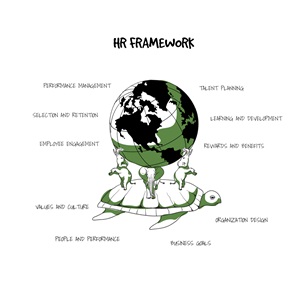
Figure 6. HR Frame Work (Source: kpi.com)
2.Recruitment and Selection
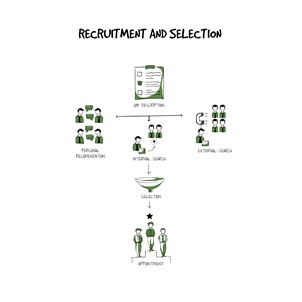
Figure 7. Recruitment and Selection (Source: kpi.com)
3.Evaluation
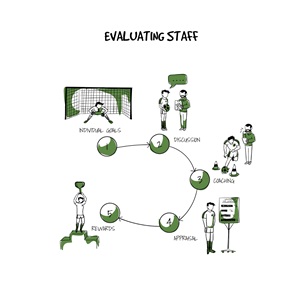
Figure 8. Evaluating Staff (Source: kpi.com)
4.Communication
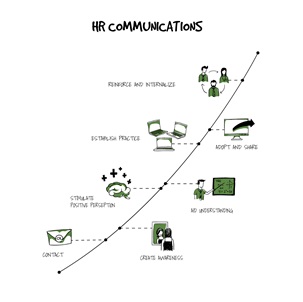
Figure 9. Communication (Source: kpi.com)


